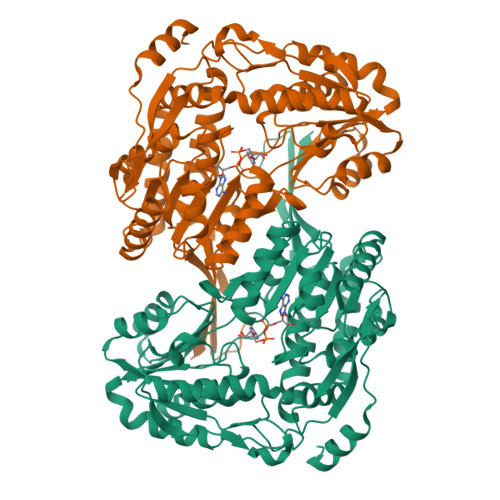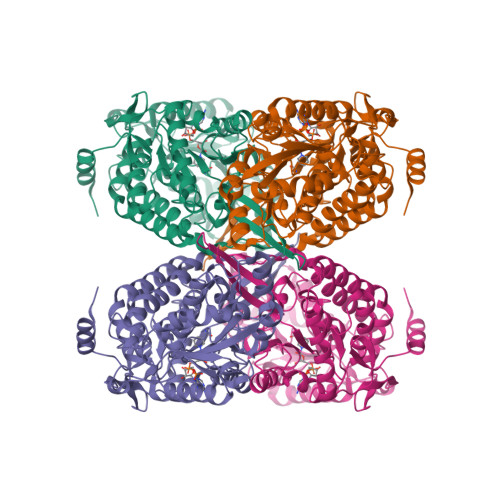Indole-3-acetaldehyde dehydrogenase-dependent auxin synthesis contributes to virulence of Pseudomonas syringae strain DC3000.
McClerklin, S.A., Lee, S.G., Harper, C.P., Nwumeh, R., Jez, J.M., Kunkel, B.N.(2018) PLoS Pathog 14: e1006811-e1006811
- PubMed: 29293681
- DOI: https://doi.org/10.1371/journal.ppat.1006811
- Primary Citation of Related Structures:
5IUU, 5IUV, 5IUW - PubMed Abstract:
The bacterial pathogen Pseudomonas syringae modulates plant hormone signaling to promote infection and disease development. P. syringae uses several strategies to manipulate auxin physiology in Arabidopsis thaliana to promote pathogenesis, including its synthesis of indole-3-acetic acid (IAA), the predominant form of auxin in plants, and production of virulence factors that alter auxin responses in the host; however, the role of pathogen-derived auxin in P. syringae pathogenesis is not well understood. Here we demonstrate that P. syringae strain DC3000 produces IAA via a previously uncharacterized pathway and identify a novel indole-3-acetaldehyde dehydrogenase, AldA, that functions in IAA biosynthesis by catalyzing the NAD-dependent formation of IAA from indole-3-acetaldehyde (IAAld). Biochemical analysis and solving of the 1.9 Å resolution x-ray crystal structure reveal key features of AldA for IAA synthesis, including the molecular basis of substrate specificity. Disruption of aldA and a close homolog, aldB, lead to reduced IAA production in culture and reduced virulence on A. thaliana. We use these mutants to explore the mechanism by which pathogen-derived auxin contributes to virulence and show that IAA produced by DC3000 suppresses salicylic acid-mediated defenses in A. thaliana. Thus, auxin is a DC3000 virulence factor that promotes pathogenicity by suppressing host defenses.
Organizational Affiliation:
Department of Biology, Washington University, St. Louis, Missouri, United States of America.



















